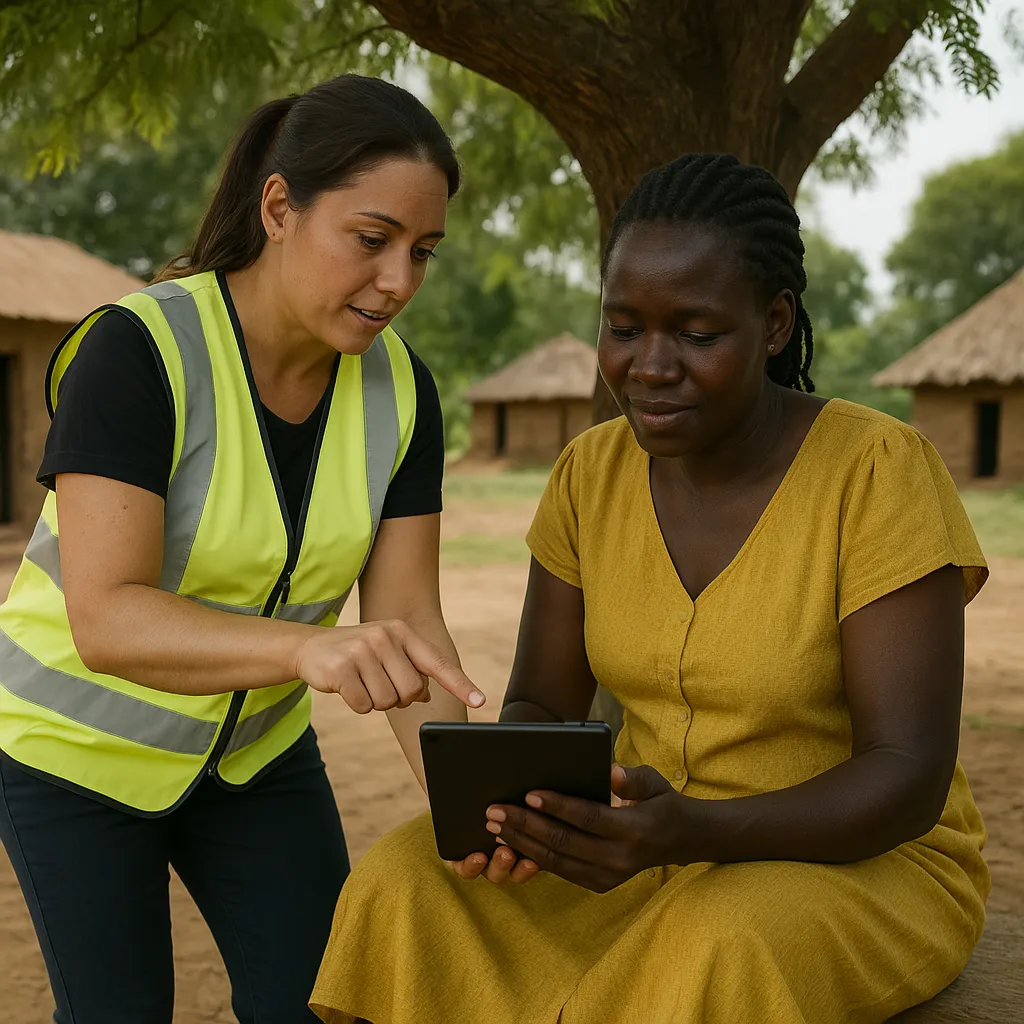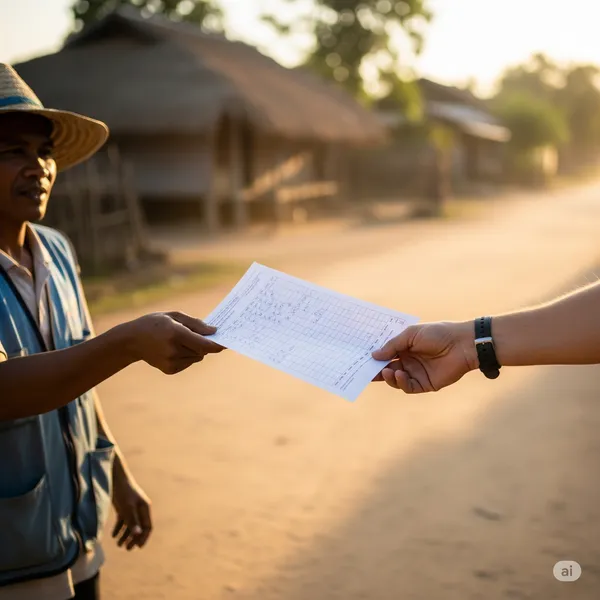Integrating Capacity Building into Verification Mandates
Published on: Wed Oct 25 2023 by Ivar Strand
A Partnership Approach: Integrating Capacity Building into Verification Mandates
Introduction: The Limits of the Audit Model
Verification and monitoring mandates are fundamental instruments in the architecture of international development aid. Their primary, established purpose is to provide assurance to donors and financing institutions. They are designed to answer a critical question: are resources being used effectively and for their intended purpose? This focus on upward accountability has, by necessity, positioned the monitor as an external auditor, a third-party entity tasked with impartially assessing an implementing partner’s performance.
While essential, this conventional audit model carries significant limitations. It can foster an adversarial dynamic, create duplicative systems, and, most critically, it misses a profound opportunity for sustainable impact. Once the verification contract ends, the monitor’s systems and expertise depart, often leaving the implementing partner’s own capacity unchanged. The central problem, therefore, is how to re-frame and structure a monitoring engagement to deliberately include knowledge transfer, transforming it from a simple audit into a partnership that strengthens the implementer’s own systems while fulfilling the core verification requirement.
The Consequences of a Conventional Mandate
Understanding the need for a new approach requires a clear-eyed assessment of the status quo. The traditional separation between the “monitor” and the “implementer” creates a set of predictable, and often counter-productive, outcomes.
- Adversarial Dynamics: When an implementer perceives a monitor’s role as purely extractive—to find flaws for a report to the donor—the relationship can become defensive. Information may be guarded, access can be constrained, and the overall engagement becomes one of compliance rather than collaboration. This dynamic actively hinders the monitor’s ability to gain a nuanced understanding of the project’s operational reality.
- Parallel M&E Systems: To ensure independence, monitors often deploy their own data collection tools, methodologies, and staff. This creates a parallel M&E system that runs alongside the implementer’s. This is not only inefficient, leading to duplication of effort and survey fatigue in communities, but it also implicitly devalues the partner’s own systems. It sends a clear message that the existing structure is not trusted or fit for purpose, creating little incentive for the partner to invest in its improvement.
- Lack of Sustainable Ownership: The M&V process, when framed as an external requirement, is rarely internalized by the implementing partner as a valuable management tool. It is something to be endured rather than embraced. Consequently, the analytical insights and data-driven management practices introduced by the monitor are seen as temporary. There is no transfer of skills or institutional ownership, meaning that once the mandate concludes, operations revert to their previous state. The investment in enhanced oversight is lost.
Reframing the Engagement: A Dual-Purpose Mandate
A more effective and sustainable model reframes the engagement from the outset. It establishes a dual-purpose mandate that serves the interests of all stakeholders. At Abyrint, we have worked to pioneer and implement this partnership approach. The core idea is to pursue two integrated objectives simultaneously.
- Primary Objective: Independent Assurance. The monitor’s non-negotiable, primary responsibility remains to provide the donor with robust, impartial, and evidence-based verification of project performance. This independence must be maintained in the final analysis and reporting.
- Secondary Objective: System Strengthening. The monitor is explicitly tasked with strengthening the implementing partner’s internal M&E systems, processes, and staff capacity through a deliberate process of knowledge transfer and mentorship.
This partnership model creates a virtuous cycle. The donor receives the required assurance and, as a significant value-add, contributes to building a more capable, self-sufficient partner—a far better long-term investment. The implementing partner gains invaluable technical assistance that improves its own management effectiveness and enhances its reputation and prospects for future funding. For the monitor, the collaborative relationship facilitates deeper access to information and a more holistic understanding of the project, leading to a more insightful and accurate final verification report.
A Framework for Integrated Partnership
Executing this dual-mandate requires a structured methodology that moves beyond traditional audit procedures. The process must be collaborative from inception to conclusion.
- Step 1. Joint Systems Diagnostic. The engagement should not begin with the monitor designing a new data collection plan. The first, crucial step is a joint diagnostic of the implementer’s existing M&E framework. Working collaboratively with the partner’s M&E team, the monitor assesses the existing systems, tools, indicators, and human resource capacity. This is not an audit but a shared exercise to identify strengths, gaps, and opportunities for improvement. The output is a jointly-owned action plan.
- Step 2. Co-Design of Monitoring Tools. Based on the diagnostic, the monitor works with the partner to refine their existing M&E system to meet the donor’s verification needs. This may involve adjusting indicators, strengthening data collection forms, or introducing new analytical techniques. The guiding principle is “collect once, use for multiple purposes.” By using a single, co-designed set of tools, data can serve the implementer’s day-to-day management needs and the monitor’s reporting requirements simultaneously, eliminating duplication.
- Step 3. Mentorship Through Phased Implementation. Knowledge transfer is achieved through a deliberate, phased approach to fieldwork and analysis.
- Demonstration: In the initial monitoring cycles, the monitor’s experienced staff take the lead in the field, accompanied by the partner’s M&E staff. This allows the monitor to demonstrate best practices in areas like ethical data collection, conducting high-quality interviews, or managing data quality assurance protocols.
- Shadowing and Coaching: In subsequent cycles, the roles are reversed. The partner’s staff take the lead in data collection and analysis, with the monitor providing real-time coaching, feedback, and support. This hands-on mentorship is the most effective way to build practical skills and confidence.
- Step 4. Joint Analysis and Learning. Data analysis should not be a solitary activity conducted by the monitor. The framework requires regular, joint “sense-making” workshops. In these sessions, both teams review the incoming data, discuss emerging trends, and collaboratively interpret the findings. This process not only builds the partner’s analytical capacity but also enriches the final report with the implementer’s deep contextual knowledge.
An Investment in Ecosystem Resilience
This partnership model is not a panacea. It requires a greater upfront investment in time and a clear mandate from the donor that values capacity-building alongside assurance. It also demands a commitment to transparency from the monitor to navigate the inherent tension between the roles of partner and auditor.
However, the returns on this investment are substantial. By systematically building the capacity of implementing partners, this approach moves beyond the verification of a single project. It strengthens the entire local implementation ecosystem. It ensures that the ability to manage with data, to learn from experience, and to be accountable to both communities and donors remains long after the external monitors have departed. This transforms monitoring from a short-term compliance cost into a long-term investment in local ownership, effectiveness, and sustainable impact.



